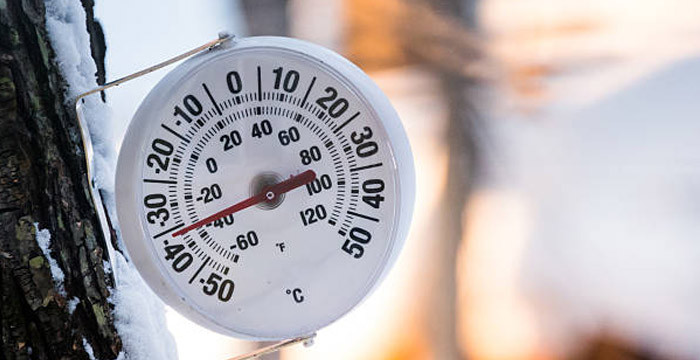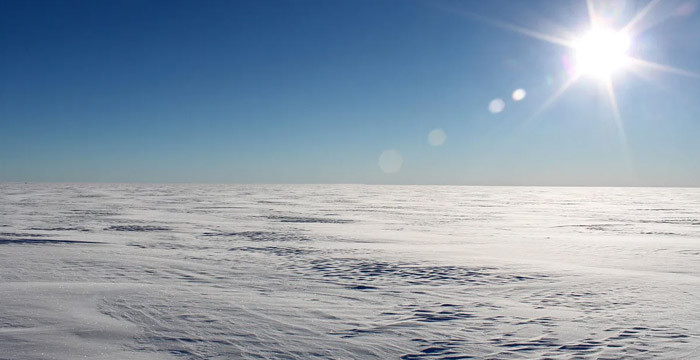Table of Content
Temperature measurements are part of daily life. We check the weather before heading out, adjust the thermostat at home, and rely on heat settings for laundry. But have you ever paused to wonder:
Is minus 40 degrees Celsius colder than minus 40 degrees Fahrenheit?
At first, it might seem like a trick question; Celsius and Fahrenheit are different systems, so surely the numbers must mean different things. Yet, the answer is both fascinating and scientifically precise:
–40°C and –40°F are the same temperature.
This isn’t a myth or a rounding coincidence. It’s a fixed point where both temperature scales intersect. In this article, we’ll explore why that happens, how cold it is, and what it means for daily life.

Understanding Celsius and Fahrenheit
To fully grasp the significance of –40, it helps to first understand how the two scales work.
- Celsius (°C) is used by most of the world. It is a metric scale based on the properties of water:
- 0°C is the freezing point of water
- 100°C is the boiling point
- Fahrenheit (°F) is used primarily in the United States and a few other countries. It was designed using different reference points:
- 32°F is the freezing point of water
- 212°F is the boiling point
- Because the scales increase at different rates (Celsius rises faster), they usually show very different numbers for the same physical temperature. For instance:
- 20°C is a mild room temperature, but that’s 68°F.
- 100°F feels scorching in Fahrenheit, but it’s just 37.8°C — about human body temperature.
The Exception: Why –40 Is the Same in Both Scales
Despite their differences, there is one specific point on both scales where the values intersect — and that point is –40.
At –40, both Celsius and Fahrenheit scales register the same physical temperature.
This happens because of how the formulas that convert between the two scales are structured. As temperatures decrease, the values on each scale get closer until they meet and then continue diverging again.
This makes –40 the only shared value on both scales, a rare agreement in an otherwise mismatched system.
How Cold Is Minus 40?
Let’s move beyond numbers. What does –40 feel like in real-world conditions?
At this temperature:
- Exposed skin can freeze in less than five minutes.
- Vehicles struggle to start due to engine oil thickening and battery performance dropping.
- Boiling water thrown into the air can instantly turn to ice mist, a phenomenon often shared on social media from places like Siberia or northern Canada.
- Metal can burn skin on contact, similar to how extreme heat can cause burns.
In short: –40 is dangerously cold. It’s the kind of cold that limits outdoor activity, triggers emergency warnings, and requires proper insulation, layered clothing, and caution.
Regions that occasionally reach this temperature include:
- Central and Northern Canada
- Eastern Russia (Siberia)
- Parts of Scandinavia
- The upper Midwest of the United States during severe cold spells
Practical Uses of Knowing This Temperature Match

1. Travel and Weather Comparisons: If you’re traveling internationally and checking local forecasts, understanding that –40 is the same in both units helps you assess risks without conversions. This is especially helpful in emergencies when fast decisions matter.
2. Education and Science Communication: In classrooms and science content, –40 is often used as an example of where two different measurement systems converge. It’s a perfect teaching moment in physics and mathematics.
3. Cross-border Engineering and Research: Professionals working on global projects, such as aircraft testing or oil pipeline monitoring, often reference –40 as a benchmark for extreme cold that’s understood across all systems.
Essential Items for a Winter Emergency Kit
- Blankets/sleeping bags
- Extra warm clothing (hat, gloves, scarf, socks)
- Non-perishable food (energy bars, nuts, canned goods)
- Water (insulated to prevent freezing)
- First aid kit
- Flashlight with extra batteries
- Charged phone and portable charger
- Shovel and windshield scraper
- Tow rope and jumper cables
- Candles/matches/lighter
- Personal items (medication, toiletries)
Steps If Stranded in Extreme Cold
- Stay in your vehicle.
- Call for help.
- Keep a window slightly open for fresh air.
- Run the engine for heat (10 mins every hour).
- Check the exhaust pipe for blockages.
- Turn on hazard lights/use flares.
- Put on extra clothing/blankets.
- Conserve food and water.
- Do light exercises to stay warm.
- Stay awake and alert.
- Signal for help if needed (cloth/whistle).
Reference Table for Quick Understanding
| Temperature | Celsius | Fahrenheit | What It Means |
| Extreme Cold | –40°C | –40°F | Dangerously cold; both scales match |
| Cold | –4°C | ~25°F | Below freezing; frost and ice risk |
| Freezing Point | 0°C | 32°F | Water freezes; standard reference point |
| Warm Wash Temp | 40°C | 104°F | Ideal for laundry; hot in weather |
Final Thoughts
Minus 40 is more than just a number. It’s a rare moment where two completely different measurement systems — Celsius and Fahrenheit — reach a perfect agreement. This single point tells us something powerful: extreme temperatures don’t care how we measure them.
Whether you're reading a forecast in °C or °F, –40 means serious cold. It's a condition that affects travel, health, infrastructure, and safety. And the fact that it’s universally acknowledged across both systems makes it a valuable piece of practical knowledge.
So the next time you see –40, there’s no need for conversion. You already know what it means:
It’s time to stay indoors, keep warm, and respect the weather.


